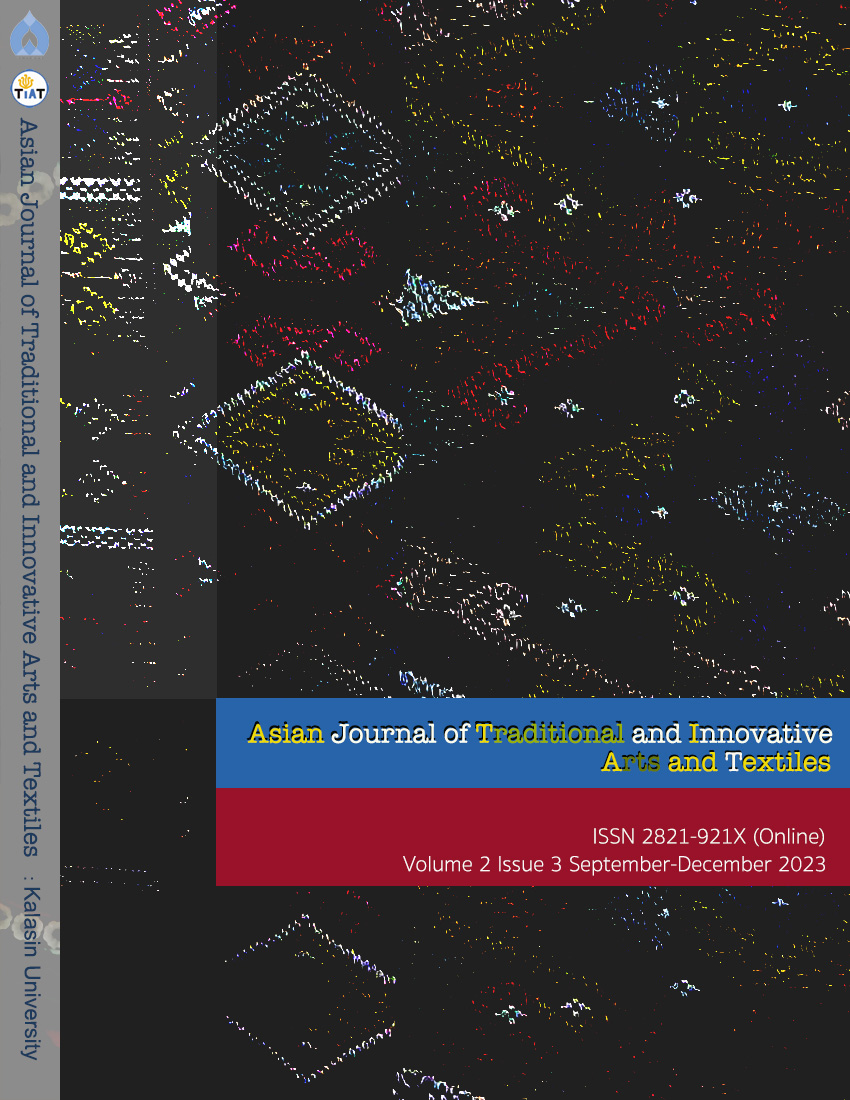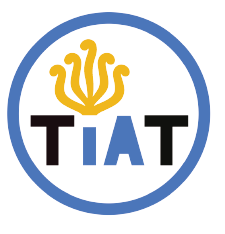Development of learning materials "Chantaboon reed mat pattern of Samet Ngam community" through a participatory process
DOI:
https://doi.org/10.14456/tiat.2023.7Keywords:
Learning Material, Mats, Reed, Participatory Process, ChanthaburiAbstract
This article, Development of Learning Material in the Chanthaboon Reed Mat Pattern of the Samet Ngam Community Through a Participatory Process, aims to investigate the educational value of the Samet Ngam reed mat patterns and to create learning materials in the context of the community. It was employed by a qualitative research model to collect data and information from members of the reed mat weaving group. There were 25 people with knowledge and expertise in providing information related to reed mat patterns, obtained from purposive selection. Data and information were collected using interview guidelines. Data and information were analyzed using descriptive analysis. The research results also included that the process of creating learning material on Samet Ngam mat patterns uses a 5-step participatory process: the first step is collecting data and information to create the learning center. The second step is to create models of the reed mat patterns to serve as a database. The third step is to compile knowledge as names of patterns, characteristics, or stories that accompany those patterns and collect them into a well-accessible database. The fourth step is to display mat-pattern learning materials. And the final step is to collaborate and present the learning center. The center has a great collection of learning material from the Chanthaboon reed mat patterns. The creative media has contributed to both academic and community values.
References
Asarat, C. and Panthupakorn, P. (1980). A study on mat weaving in Chanthaburi (Research Report). Chonburi : Eastern Cultural Promotion Center Project Srinakharinwirot University, Bangsaen.
Bangthamai, E., Boonprasert, S. and Saneewong Na Ayudhaya, N. (2015). The development of learning media with the community participation by using an archeological learning resource of Nongratchawat, Suphanburi province to encourage creative learning. Veridian E-Journal Silpakorn University. 8(1) : 1-17.
Manarungvit, K. (2021). Symbolic media Belief in the identity of Thai-Lao woven fabrics. Journal of Liberal Arts (Wang Nang Leng) RMUTP. 1(1) : 62.
Munmanee, S. (2021). Research report Local stories Chanthaburi Province The role of creating space for organizing eco-cultural tourism. Chanthaburi : Faculty of Education, Rambhaibarni Rajabhat University.
Phuripanik, P. (2016). Communication of Contractual Consumption Behavior and Identity Composition of Comfortable Vehicle Users: A Case of TBZ Club Thailand. Journal of Suandusit Graduate College. 12(3) : 1-19.
Phuwanartwijit, T. (2015). Development of Cultural Capital and Tourism Management in Tourism Pattern of Viengtakan Cultural Village, Sanpatong District, Chiangmai province. Journal of Community Development and Quality of Life. 5(1) : 14-23.
Ramitanon, C. (2007). Cultural Identity and Changes. Chiang Mai : Faculty of Sociology, Chiang Mai University.
Rojpitakkul, L. (2012). Developing reed mat patterns and transferring new innovations of the Bang Phluang reed mat processing community enterprise to upgrade community products. Chachoengsao : Rajabhat Rajanagarindra University.
Sayrat, B. and Phaetluangfa, C. (2022). Study and analysis of the process of transferring knowledge to local wisdom: Weaving reed mats in the Chanthaburi province. Journal of Educational Measurement. 37(101) : 104-113.
Sitanurak, S. (2020). Development of Learning Media ‘ Our Community’ to improve Communicative English Skills for Primary School Students of Pa Tum Don Community, Phraw District, Chiang Mai (Research Report). Chaing Mai : Chaing Mai University.
Thanupol, N. (2016). Development of Eco-Tourism Business in Banpong Village, Phaphai Subdistrict, Sansai District, Chiang Mai. Chaing Mai : Coordination of Maejo University and Office of Research Fund Scholarship.
Thimkham, T. (1985). Local Development. Bangkok : Kasetsart University.
United Nation. (1987). Report of the World Commission on Environment and Development Our Common Future. Federal Office for Spatial Development ARE. Retrieved 1 October 2023, from https://www.are.admin.ch/are/en/home/sustainable-development/international-cooperation/2030agenda/unmilestones-in-sustainable-development/1987--brundtland-report.html
Wilaiwan, J. (2007). Handbook for "Khun Fa", a facilitator who creates participatory learning (Facilitator). Bangkok : Pimdee Company.
Downloads
Published
How to Cite
Issue
Section
License
Copyright (c) 2023 Asian Journal of Traditional and Innovative Arts and Textiles

This work is licensed under a Creative Commons Attribution-NonCommercial-NoDerivatives 4.0 International License.





